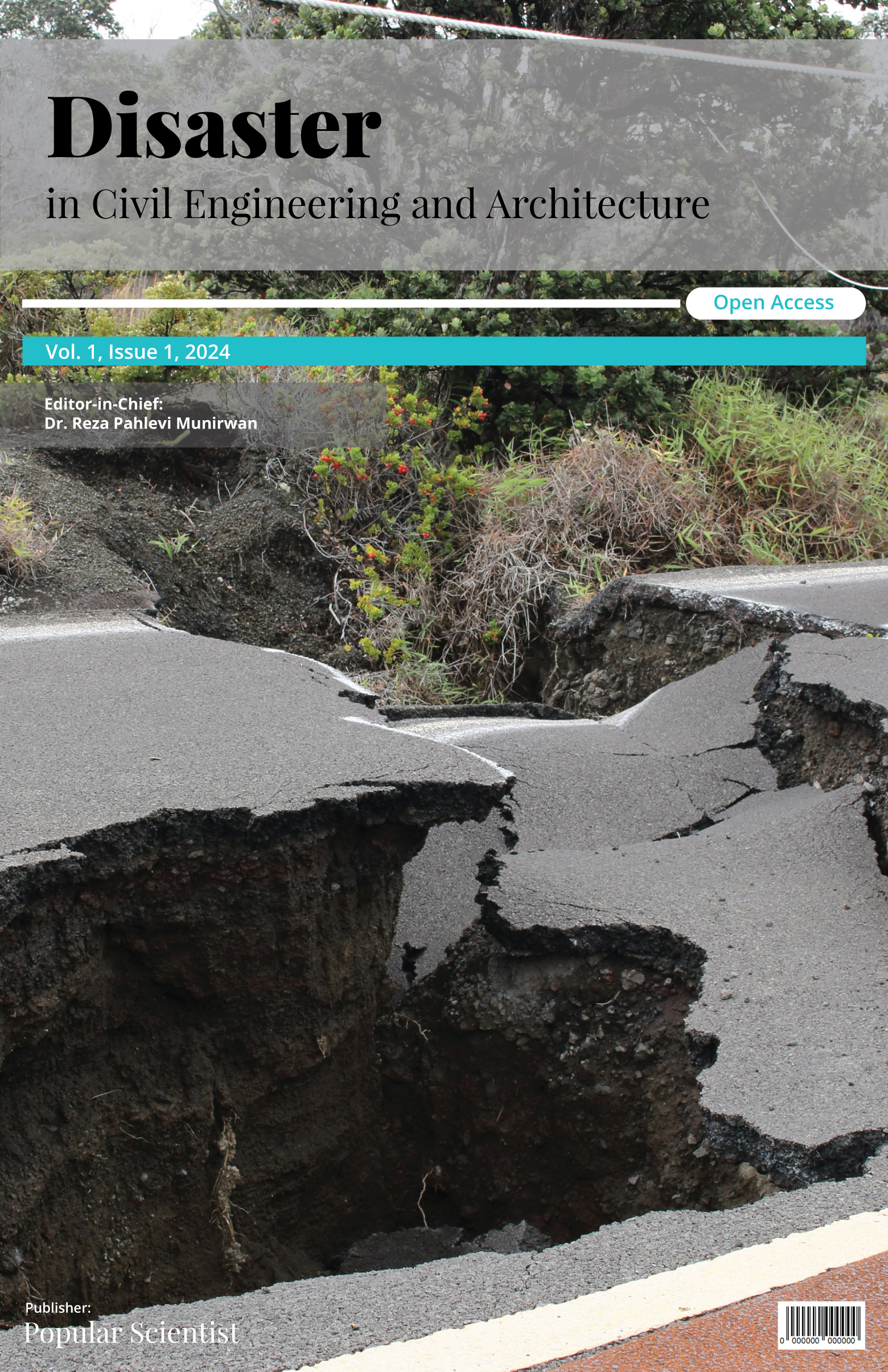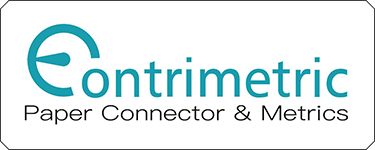Enhancing Flood Resilience in Coastal Areas by Investigating Issues and Countermeasures Using Digital Twin Technology
DOI:
https://doi.org/10.70028/dcea.v1i1.7Keywords:
Flood Monitoring System, Resilience, Issues, Strategies, Digital TwinAbstract
The impact of flooding requires innovative solutions for enhancing flood preparedness and reducing societal and economic losses. This study explores the potential of digital twin technology as an innovative tool for flood predictions, enabling real-time monitoring and data integration, contributing to developing more resilient communities and reducing flood risks. This study aims to enhance coastal flood resilience in Malaysia by examining challenges and strategies by applying digital twin technology. The objectives of the study are (1) to identify issues and countermeasures of flood in coastal areas (2) to compare the most relevant issues and countermeasures of flood in the coastal area for different organizations for application in digital twin technology and (3) to analyses the interrelationship among organization for application in digital twin technology in Malaysia. The survey gathered collaboration data from 122 participants, comprising clients, consultants, and contractors. Finally, the data were analysed using each criterion's mean score ranking, normalization techniques, Kruskal-Wallis's, spearman correlation, and overlap analysis. The top 4 critical issues are F05, F07, F06, and F02. The high cost of implementation due to the increased amount of sensor and computational resources needed is considered the most critical. While for the top 3 countermeasures are S04, S06, and S07. Improved planning and prediction for floods are considered the highest rank among the countermeasures. The findings of this study will provide practical insights for organizational practitioners in identifying critical elements and countermeasures when implementing digital twin technology in Malaysia. Future industry studies can build on the strong foundation laid by this research, deepening the understanding of digital twin applications in flood management and risk reduction.
Downloads
References
M. Ghaith, A. Yosri, and W. El-Dakhakhni, “Synchronization-Enhanced Deep Learning Early Flood Risk Predictions: The Core of Data-Driven City Digital Twins for Climate Resilience Planning” Water (Switzerland), vol. 14(22), 2022. doi: http://dx.doi.org/10.3390/w14223619
E. C. O’Donnell, and C. R. Thorne, “Drivers of future urban flood risk” In Philosophical Transactions of the Royal Society A: Mathematical, Physical and Engineering Sciences, vol. 378, Issue 2168, Royal Society Publishing, 2020. doi: http://dx.doi.org/10.1098/rsta.2019.0216
L. M. Losier, R. Fernandes, P. Tabarro, and F. Braunschweig, “The Importance of Digital Twins for Resilient Infrastructure A Bentley White Paper” 2019. www.bentley.com
F. Laamarti, H. F. Badawi, Y. Ding, F. Arafsha, B. Hafidh, and A. Saddik, “An ISO/IEEE 11073 Standardized Digital Twin Framework for Health and Well-Being in Smart Cities” IEEE Access, vol. 8, 105950–105961, 2020. doi: http://dx.doi.org/10.1109/ACCESS.2020.2999871
B. Rodriguez, E. Sanjurjo, M. Tranchero, C. Romano, and F. Gonzalez, “Thermal Parameter and State Estimation for Digital Twins of E-Powertrain Components” IEEE Access, vol. 9, 97384–97400, 2021. doi: http://dx.doi.org/10.1109/ACCESS.2021.3094312
M. Batty, “Digital twins” In Environment and Planning B: Urban Analytics and City Science, vol. 45, Issue 5, pp. 817–820, 2018. SAGE Publications Ltd. doi: http://dx.doi.org/10.1177/2399808318796416
C. Fan, Y. Jiang, and A. Mostafavi. “Social Sensing in Disaster City Digital Twin: Integrated Textual–Visual–Geo Framework for Situational Awareness during Built Environment Disruptions” Journal of Management in Engineering, vol. 36(3), 2020. doi: http://dx.doi.org/10.1061/(asce)me.1943-5479.0000745
D. N. Ford, and C. M. Wolf. “Smart Cities with Digital Twin Systems for Disaster Management” Journal of Management in Engineering, vol. 36(4), 2020. doi: http://dx.doi.org/10.1061/(asce)me.1943-5479.0000779
N. Kshetri, “The Economics of Digital Twins” Computer, vol. 54(4), pp. 86–90, 2021. doi: http://dx.doi.org/10.1109/MC.2021.3055683
S. Nativi, P. Mazzetti, and M. Craglia. “Digital ecosystems for developing digital twins of the earth: The destination earth case” Remote Sensing, vol. 13(11), 2021. doi: http://dx.doi.org/10.3390/rs13112119
C. Fan, C. Zhang, A. Yahja, and A. Mostafavi. “Disaster City Digital Twin: A vision for integrating artificial and human intelligence for disaster management” International Journal of Information Management, vol. 56, 2021. doi: http://dx.doi.org/10.1016/j.ijinfomgt.2019.102049
K. Y. H. Lim, P. Zheng, and C. H. Chen. “A State-of-the-art survey of Digital Twin: techniques, engineering product lifecycle management and business innovation perspectives” In Journal of Intelligent Manufacturing, vol. 31, Issue 6, pp. 1313–1337, 2020. Springer. doi: http://dx.doi.org/10.1007/s10845-019-01512-w
M. M. Rathore, S. A. Shah, D. Shukla, E. Bentafat, and S. Bakiras. “The Role of AI, Machine Learning, and Big Data in Digital Twinning: A Systematic Literature Review, Challenges, and Opportunities” In IEEE Access, vol. 9, pp. 32030–32052, 2021. Institute of Electrical and Electronics Engineers Inc. doi: http://dx.doi.org/10.1109/ACCESS.2021.3060863
M. Singh, E. Fuenmayor, E. P. Hinchy, Y. Qiao, N. Murray, and D. Devine. “Digital twin: Origin to future” In Applied System Innovation, vol. 4, Issue 2, 2021. MDPI AG. doi: http://dx.doi.org/10.3390/asi4020036
H. Lehner, and L. Dorffner. “Digital geoTwin Vienna: Towards a Digital Twin City as Geodata Hub” PFG – Journal of Photogrammetry, Remote Sensing and Geoinformation Science, vol. 88(1), pp. 63–75, 2020. Doi: http://dx.doi.org/10.1007/s41064-020-00101-4
L. Billa, S. Mansor, and A. R. Mahmud. “Spatial information technology in flood early warning systems: An overview of theory, application and latest developments in Malaysia” Disaster Prevention and Management: An International Journal, vol. 13(5), pp. 356–363, 2004. doi: http://dx.doi.org/10.1108/09653560410568471
S. Ehsan, R. Ara Begum, N. Ghani Md Nor, and K. Nizam Abdul Maulud. “Current and potential impacts of sea level rise in the coastal areas of Malaysia” IOP Conference Series: Earth and Environmental Science, vol. 228(1), 2019. doi: http://dx.doi.org/10.1088/1755-1315/228/1/012023
Book review. Disasters, vol. 31(4), 530–533, 2007. doi: http://dx.doi.org/10.1111/j.0361-3666.2007.01024.x
B. C. Kim, “Dependence Modeling for Large-scale Project Cost and Time Risk Assessment: Additive Risk Factor Approaches” IEEE Transactions on Engineering Management, vol. 70(2), pp. 417–436, 2023. doi: http://dx.doi.org/10.1109/TEM.2020.3046542
A. Francisco, N. Mohammadi, and J. E. Taylor. “Smart City Digital Twin–Enabled Energy Management: Toward Real-Time Urban Building Energy Benchmarking” Journal of Management in Engineering, vol. 36(2), 2020. doi: http://dx.doi.org/10.1061/(asce)me.1943-5479.0000741
R. Macrorie, S. Marvin, and A. While. “Robotics and automation in the city: a research agenda” Urban Geography, vol. 42(2), pp. 197–217, 2021. doi: http://dx.doi.org/10.1080/02723638.2019.1698868
Y. Ham, and J. Kim. “Participatory Sensing and Digital Twin City: Updating Virtual City Models for Enhanced Risk-Informed Decision Making” Journal of Management in Engineering, vol. 36, no. 3, 2020. doi: https://doi.org/10.1061/(ASCE)ME.1943-5479.0000748
M. Perno, L. Hvam, and A. Haug. “Implementation of digital twins in the process industry: A systematic literature review of enablers and barriers” In Computers in Industry, vol. 134, Elsevier B.V. 2022. doi: http://dx.doi.org/10.1016/j.compind.2021.103558
S. Ribaric, and I. Fratric. “Experimental Evaluation of Matching-Score Normalization Techniques on Different Multimodal Biometric Systems” pp. 498 – 501, 2006. doi: http://dx.doi.org/10.1109/MELCON.2006.1653147
C. Y. M.Tan, and R. A. Rahman, “WELL Building: Key Design Features for Office Environments” Journal of Architectural Engineering, vol. 29(2), 2023. doi: http://dx.doi.org/10.1061/jaeied.aeeng-1544
M. S. Al-Mohammad, A. T. Haron, M. Esa, M. N. Aloko, Y. Alhammadi, K. S. Anandh, and R. A. Rahman. “Factors affecting BIM implementation: evidence from countries with different income levels” Construction Innovation, vol. 23(3), pp. 683–710, 2023. doi: http://dx.doi.org/10.1108/CI-11-2021-0217
S. S. King, R. A. Rahman, M. A. Fauzi, and A. T. Haron. “Critical analysis of pandemic impact on AEC organizations: the COVID-19 case” Journal of Engineering, Design and Technology, vol. 20(1), pp. 358–383, 2022. doi: http://dx.doi.org/10.1108/JEDT-04-2021-0225
Downloads
Published
Issue
Section
License
Copyright (c) 2024 Nur Arina Amirah Azlan, Abdul Rahimi Abdul Rahman, Bala Ishiyaku, Ahmad Rizal Alias (Author)

This work is licensed under a Creative Commons Attribution-NonCommercial 4.0 International License.













